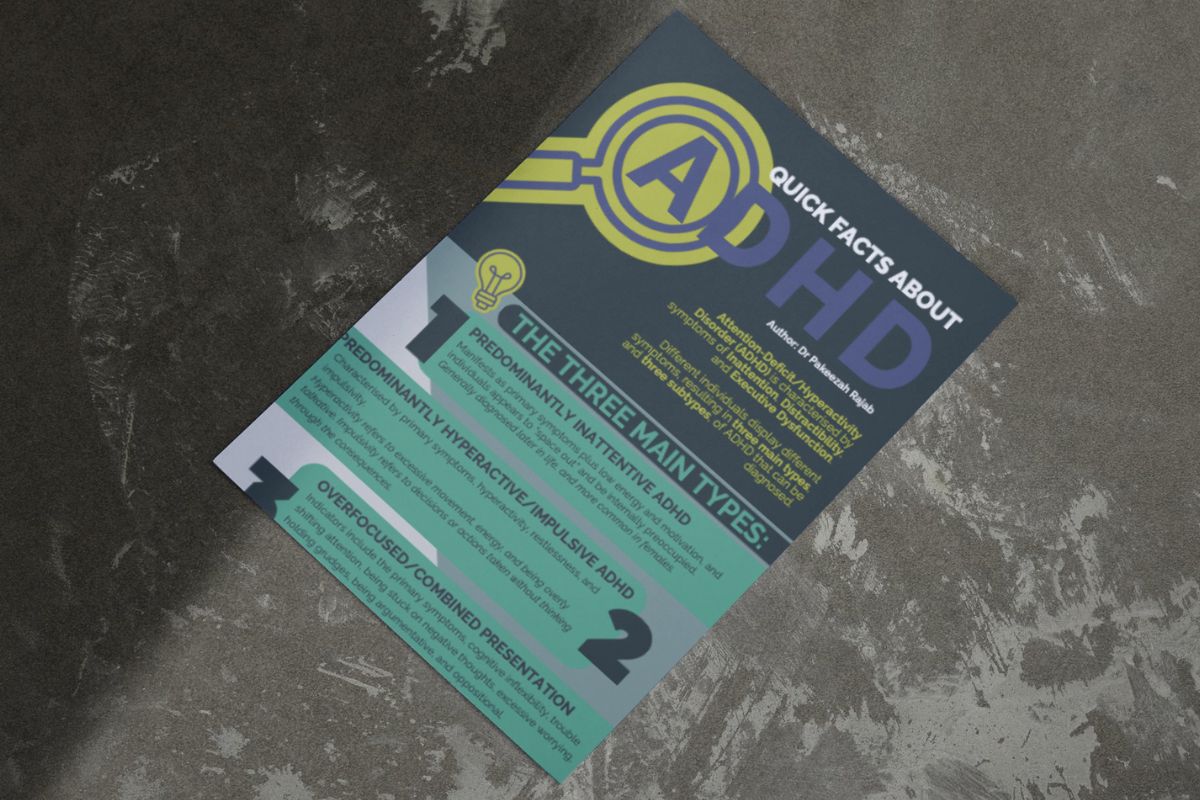To commemorate National ADHD Day (14 September), the PsySSA Division for Research and Methodology sought to summarise the different manifestations of Attention-Deficit/Hyperactivity Disorder and its’ implications on behaviour across the lifespan.
What is ADHD?
Attention-Deficit/Hyperactivity Disorder (ADHD) is a chronic neurodevelopmental condition characterised by persistent patterns of inattention, hyperactivity, and impulsivity that interfere with general functioning or development. An ADHD diagnosis is based on criteria outlined in the DSM-5-TR, which includes symptoms being present for at least six months and causing significant impairment.
While ADHD is commonly identified by primary symptoms of inattention, distractibility, and poor executive functioning, the American Psychological Association (APA) differentiates between three specific types of ADHD. Recently, specialists have also recognised additional common comorbidities that accompany an ADHD diagnoses, and recommend three more subtypes. Each type presents with different brain function issues, which cause different symptoms, and require specialised treatment protocols.
Download the FREE infographic that summarises these types and their presenting symptomology.
The impact of ADHD
Insights into the South African prevalence rates are limited, but estimated to be between 2-16% in children (Boshomane, Pillay, & Meyer, 2020; Botha & Schoeman, 2023). Adult estimates are somewhat lower, at 2.5-4.2% prevalence (Schoeman & Leibenberg, 2017), although it has been noted that 60 - 70% of children diagnosed with ADHD continue to have symptoms in adulthood (Belanger et al., 2018).
Possible causes for this larger estimated range in children include overdiagnosis in younger populations (and underdiagnosis in older groups), varying methodologies and assessment practices employed to make diagnoses, and limited expertise from practitioners (Schellack & Meyer, 2016). Given the life-changing impact of an ADHD diagnosis on an individual and their families, it should not be a diagnosis that is made in haste. Rather, practitioners should be careful in ensuring that they’re obtaining as holistic a view of their client as possible, before assigning the “ADHD label”.
Having untreated ADHD affects nearly every aspect of a person’s life and has been associated with school underachievement, family conflict, drug abuse, legal difficulties and poor work performance. Additionally, even though ADHD does not cause other psychological problems, it is common that other disorders (such as mood, anxiety, substance abuse, and learning disorders) occur alongside it, making diagnosis and treatment more challenging. Stimulant medications, such as Ritalin or Adderall, are often prescribed to manage ADHD symptoms in both children and adults. However, before medicating a client, it is important to identify their specific ADHD presentation type, as stimulants can make some forms of ADHD worse, as indicated above as well. Sometimes medicinal reactions can be extreme, causing hallucinations, violent outbursts, volatile temperaments, psychosis and suicidal behaviour. Alternatively, engaging in some form of sport or art form (for example, music) has been shown to improve or reduce the frequency of ADHD symptoms.
PLEASE do not use this article as a diagnostic resource; it is meant for informative purposes only. The South African Depression and Anxiety Group (SADAG) has a toll-free ADHD helpline (0800 55 44 33), please reach out to them if you are concerned that you or a loved one may have undiagnosed or misdiagnosed ADHD.
Share this post
Newsletter
Get up-to-date industry news right in your inbox



